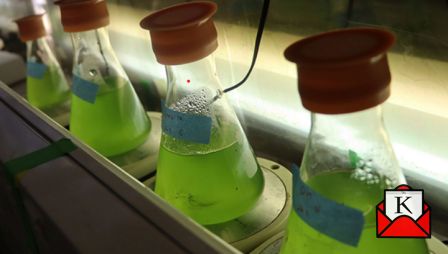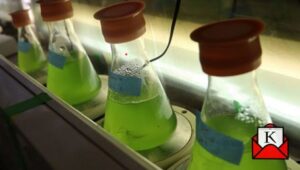Guest Blog: The Ultimate Solution To Global Warming!


Hydrogen-powered bicycles and cars have been in serial production for years. In these vehicles, the regular polluting lithium battery has been replaced by a fuel cell that converts hydrogen, a non-polluting fuel, to electricity. Most of today’s hydrogen is, however, still produced from natural gas in a highly polluting process and is therefore referred to as gray hydrogen. Not only is natural gas a non-renewable source of energy, but it also creates carbon dioxide gas when burned, damaging our environment, and contributing to global warming.
Enter a new TAU discovery, which may boost the industrial transition from using polluting gray hydrogen to environmentally friendly green hydrogen: Researchers identified a mutant of a known strain of microscopic algae that allows, for the first time, the production of green hydrogen gas via photosynthesis on a scale suited to industrial requirements. Hydrogen gas can thus be produced solely through renewable energy and in a climate-neutral manner, reducing our carbon footprint and greenhouse gas emissions dramatically to stabilize global temperatures.
Humanity’s transition to the use of green hydrogen may be the ultimate solution to the problem of global warming.
Continuous Production Achieved
The study was led by doctoral student Tamar Elman, under the supervision of Prof. Iftach Yacoby from the Renewable Energy Laboratory of The George S. Wise Faculty of Life Sciences at Tel Aviv University. The study was recently published in the prestigious journal Cell Reports Physical Science.
While production of green hydrogen is possible through solar panels wired to devices that perform water breakdown into hydrogen and oxygen (electrolyzers), the researchers explain that this is an expensive process, requiring precious metals and distilled water. In nature, hydrogen is produced as a by-product of photosynthesis for periods of minutes by micro-algae, unicellular algae found in every water reservoir and even in the soil. For this biological process to become a sustainable source of energy, however, humanity must engineer micro-algae strains that produce hydrogen for days and weeks.
Prof. Yacoby explains that as part of the laboratory tests, the researchers identified a new mutant in microscopic algae that prevents oxygen from accumulating at any lighting intensity, and therefore hypothesized that continuous hydrogen production could be achieved from it. With the help of bioreactor measurements in liter volumes, they were indeed able to prove that hydrogen can be produced continuously for more than 12 days.
According to Prof. Yacoby, the new mutant overcomes two major barriers that have so far hindered the continuous production of hydrogen:
Accumulation of oxygen in the process of photosynthesis – As a rule, oxygen poisons the enzyme that produces hydrogen in algae, but in the mutation, increased respiration eliminates the oxygen and allows favorable conditions for continuous hydrogen production.
Loss of energy to competing processes – And this includes carbon dioxide fixation into sugar. This, too, has been solved in the mutant and most of the energy is being channeled for continuous hydrogen production.
To industrialize these results, the research team led by Prof. Yacoby is working on a pilot program for larger volumes and the development of methods that will allow the time of hydrogen harvest to be extended, to reduce its cost to competitive levels. “The rate of hydrogen production from the new mutant reaches one-tenth of the possible theoretical rate, and with the help of additional research it is possible to improve it even further,” concludes Prof. Yacoby.
For further information, log onto – https://studyisrael.org.il/
